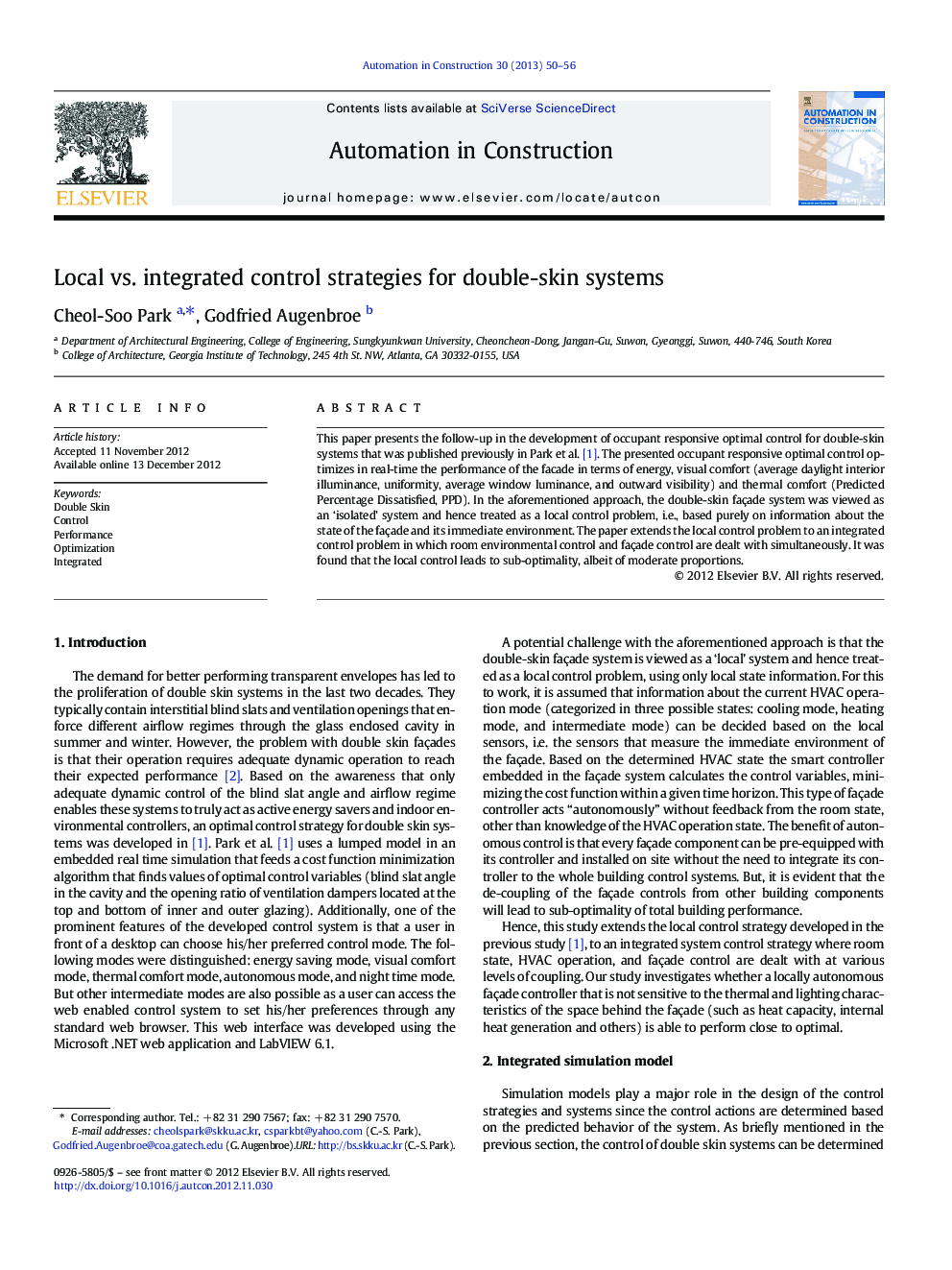| Article ID | Journal | Published Year | Pages | File Type |
|---|---|---|---|---|
| 246757 | Automation in Construction | 2013 | 7 Pages |
This paper presents the follow-up in the development of occupant responsive optimal control for double-skin systems that was published previously in Park et al. [1]. The presented occupant responsive optimal control optimizes in real-time the performance of the facade in terms of energy, visual comfort (average daylight interior illuminance, uniformity, average window luminance, and outward visibility) and thermal comfort (Predicted Percentage Dissatisfied, PPD). In the aforementioned approach, the double-skin façade system was viewed as an ‘isolated’ system and hence treated as a local control problem, i.e., based purely on information about the state of the façade and its immediate environment. The paper extends the local control problem to an integrated control problem in which room environmental control and façade control are dealt with simultaneously. It was found that the local control leads to sub-optimality, albeit of moderate proportions.
► Two different control strategies of the façade were studied: local vs. integrated. ► This was done for two room types (low mass and heavy mass) for a typical winter day. ► The local control leads to sub-optimality, albeit of moderate proportions.
